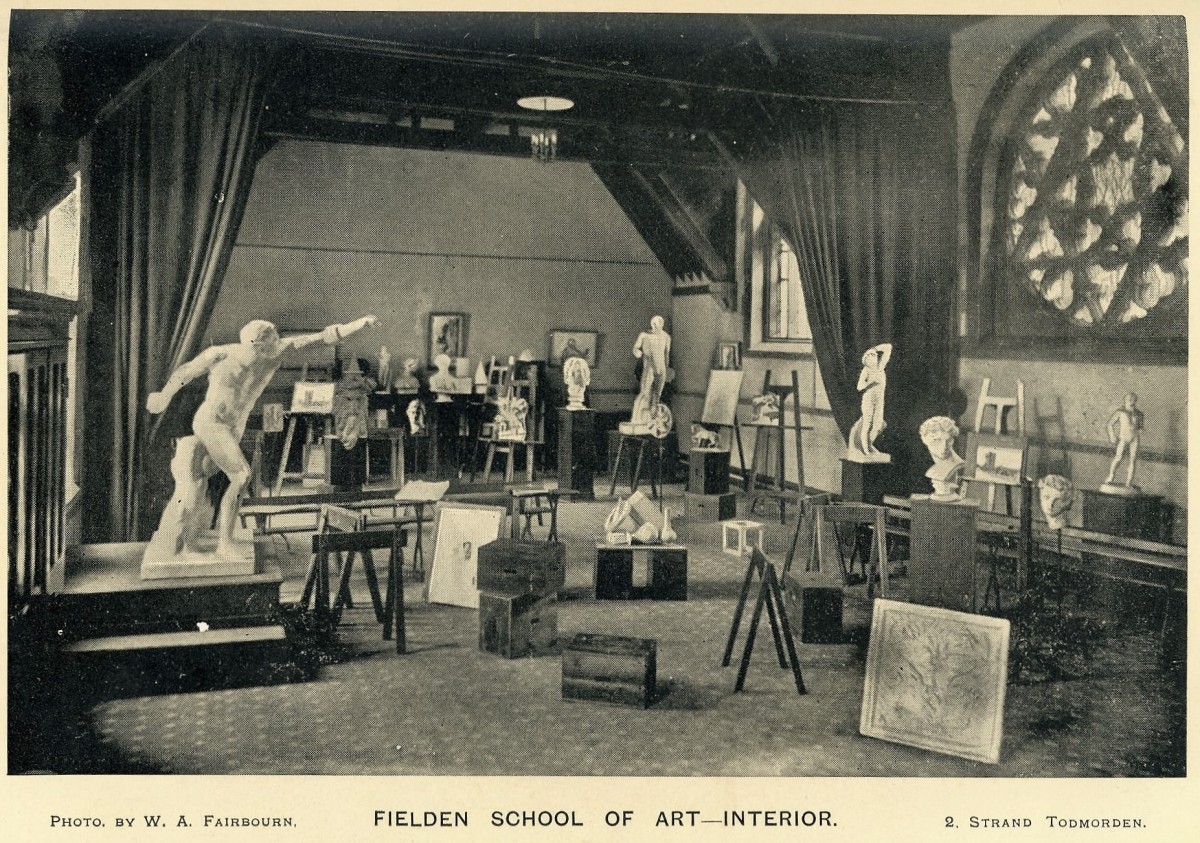THE FIELDEN SCHOOL OF ART
1898 – 1939
When Todmorden Urban District Council became a Municipal Borough, in 1896, and was thus empowered to do so by the Technical Instruction Act of 1889, the Technical Instruction Committee provided 37 classes of further education at schools and other places in the town, with number 30 being an Art Class at Roomfield School.
Plans were made to establish a Technical School at Waterside, a Science School at Roomfield School and an Art School.
In December 1897, John Ashton Fielden conveyed the former Centre Vale School building to the Borough Council, for use as an Art and Technical School. The Council decided to use it only for Art, and named it The Fielden School of Art, in recognition of the gift and its former use.

On the 11th of October 1898 there was a formal opening of all the new further education establishments, by the Marquis of Ripon, “whose connection with education has been a long and honourable one”. He was a former Chairman of the West Riding County Council.
The opening event took a full day, with visits to and speeches at every institution: The Science School at Roomfield, the Technical School at Waterside and the School of Art. The streets were lined with enthusiastic townspeople as the group of dignitaries proceeded from one site to another. An evening meeting followed at the Town Hall, with a banquet and yet more speeches.
The School remained open throughout WW1, although with reduced staffing and numbers.
In 1931, a typical year, there were 17 different classes in amazing variety, ranging from Batik to Freehand Drawing, and Modelling in Clay to Painting in Oils and Water Colour. Students mostly attended evening classes, but the School was open on Saturday so that they could continue their work in studio. Classes for the decorative element of Painters and Decorators work were also provided.
Courses at the Fielden School of Art ended in 1939, as the building became a first-aid station when WW2 began. The Art School merged with the Technical School, in the building now known as the Old Fire Station and some art classes continued there. When Calder College opened in the 1950’s all the courses transferred to there, including Art, which was soon available as an ‘A’ Level subject and later as a Foundation Course.


